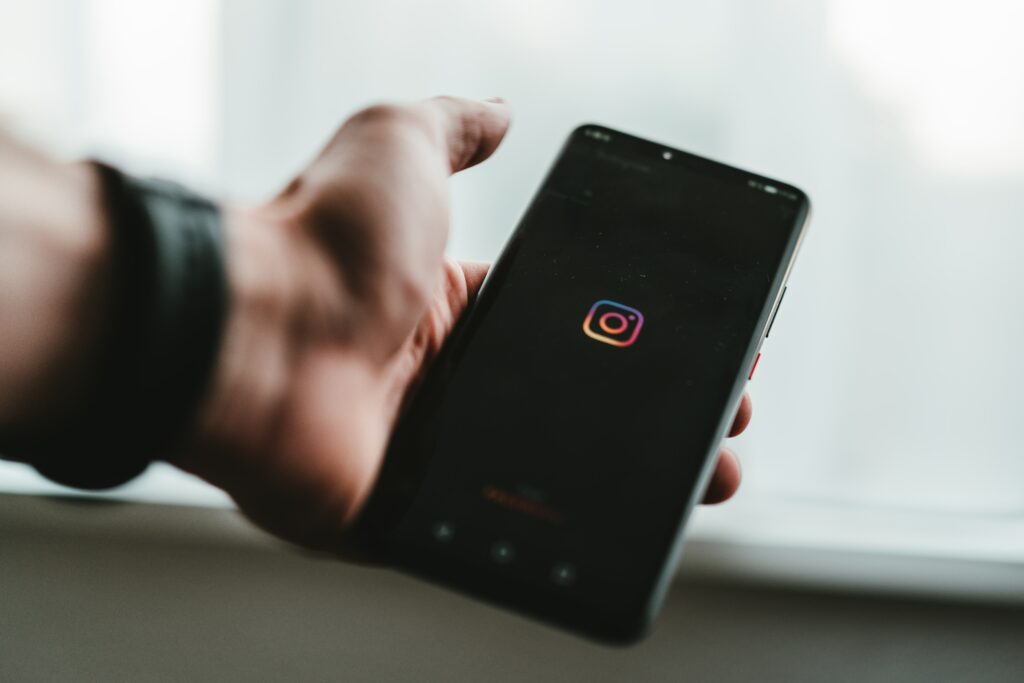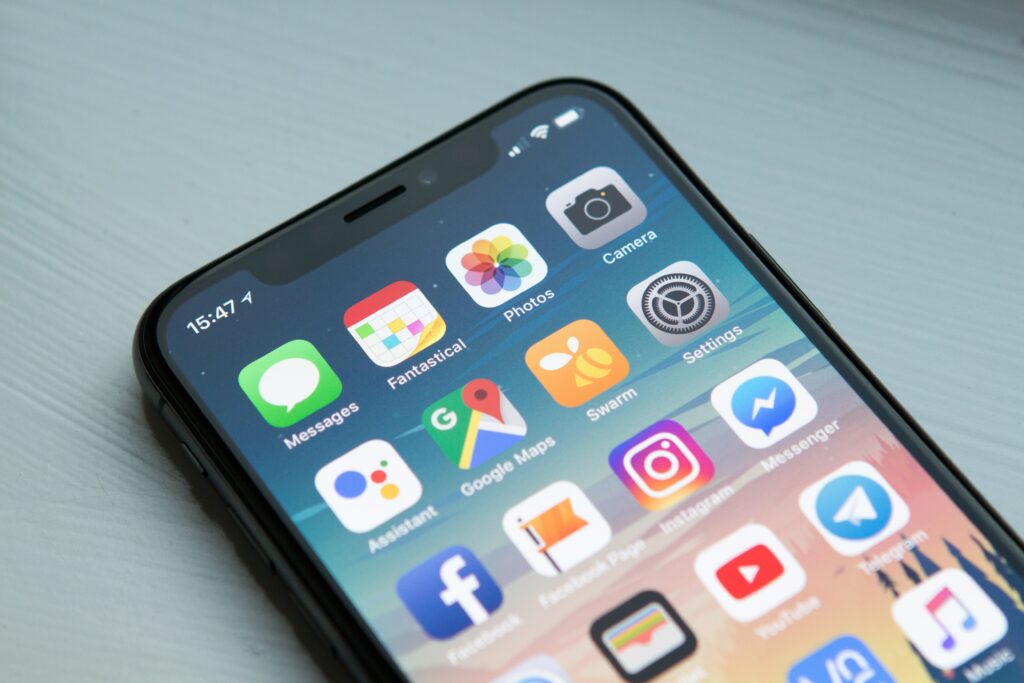If you build it, they will come — right?
Unsurprisingly, app developers often demonstrate an extraordinary passion for the products they introduce. If you’re a member of this unique fraternity, it’s likely that you’ve spent at least one launch date beaming with confidence, fully expecting the market to see what you see: a groundbreaking market introduction that will quickly transform into an industry winner. Indeed, your entire team probably refreshed your data again and again, waiting for customers to start downloading, converting your solution into record revenues — turning months of sweat and tears into a substantial payoff. Sound about right?
Unfortunately, the plans of mice and men veer off track more often than not, especially in the app world, and we learn quickly that spearheading a new or improved technology is not nearly enough. Typically, it’s only the beginning—a far cry from persuading your audience that your app is industry-disruptive—of something meaningfully different.
Picture this analogy…
Say you’re an elite marathoner with a world-class time to your credit for the standard twenty-six miles distance. So, you enter the Chicago Marathon, where the entry rises to thirty thousand—29,999 of whom are verifiably slower than you. Unfortunately, you arrive too late to take up your allotted front position at the start, getting caught in the crowd’s back section of the slowest entrants. Thus, fighting through the packed field obliterates your chances of a win, or even a commendable finish. Even worse, you spend the entire race completely stressed, navigating your way around plodders in a congested environment, the latter frustrating every move to run at your natural speed.
The above scenario is an appropriate parallel to the current app environment.
- Did you know that according to a March 2021 market overview, Android consumers had access to 3.48 million apps through Google Play, and IOS users 2.2 million through the Apple Store? Can you even imagine how much higher those numbers are today?
- Moreover, Statista estimated that users will download the above 5.5 million apps 114 billion times in 2022, rising to 143 billion by 2026.
- Therefore, even if your app is the next best thing since sliced bread, you’re entering a gigantic marketplace full of competitors, crowding the space with a dog-eat-dog mentality and unfathomable activity. It stands to reason that emerging ahead of the curve will test your patience, resilience, and marketing know-how to the extreme.
US Developers quickly realize they need to know the ins and outs of getting traction for their apps when launching on the Apple Store or Google Play platforms. Thus, our article will guide you in promoting your brand in numerous ways, including paid and unpaid advertising. So, read on!
1. Friends and family—nobody else is more for you.
Barriers are all over the show in a competitive marketplace, but the one safe haven is taking advantage of your closest relationships. Induce your team to list every relation and close friend, even strong acquaintances, getting them to support your launch. At this suggestion, it’s likely that one or all of the following thoughts enter your mind:
- “I don’t want to look desperate to my closest and dearest.”
- “No way! How can I take advantage of people who feel uncomfortable saying ‘no’ to me.”
- “How can a limited grouping like this get me into significant market segments?’
Think again. Why? Because genuine friendship between people depends on being there at moments like this, contributing to success. It adds to the relationship versus detracting from it. Secondly, early adopters (EAs) traditionally spread the word to their friends and family circles that are not part of yours—the same principle driving Facebook and other social media—a massive energizer of the promotional process. Without the EAs powering your efforts, breaking through the wall of “plodders” will be a severe challenge.
Finally, I’m not suggesting you recruit friends and family without incentive. Indeed, it’s vital to deploy the following measures to create excitement amongst this selected group:
- Offer them free or heavily discounted usage incentives.
- Provide an exclusive code to the EAs. Every time a new user pops up after inputting the code, reward the EA with extra usage time or a similar reward.
- Please encourage them to:
- Submit positive reviews and acknowledge the latter personally, one-on-one.
- Give constructive feedback. Everyone feels pivotal in an EA role, especially if you follow their advice and acknowledge the benefit you derived from receiving it.
2. Organic installs based on astute App Store Optimization (ASO)
ASO—a close cousin to SEO in the website arena—is a spearhead in leaving the herd behind and securing app users. Universal data indicates that ASO generates more than six of every ten mobile app users. So, what does that tell us? First, most of the consumers deploying mobile apps do so without a specific brand preference. Thus, it dramatically impacts Retail App Customer Experiences, which rely heavily on keywords to locate solutions in search touchpoints. Secondly, this leads us to ask the following questions:
A. If ASO is free, do I need to budget for those strategies?
ASO goals focus on your app appearing within the top five results whenever your customers search around your usage category. Traditionally searchers, logically or otherwise, view the top-most results as tried-and-tested, believing that at least one will deserve their long-term loyalty. The bottom line is your budget must include fees or salary directed at ASO efficiency for the following reasons:
- Search ranking is so crucial it’s unlikely the prospect will investigate apps appearing below #5 on the results list.
- While ASO on the surface is free, the elephant in the room is this:
- Finding the search terms where you’ll make the most headway requires expertly guided trial and error before visibility and conversions from ASO get traction.
- Therefore, you must employ skills and unique talent inside your company (or contract it outside) to zone in on the keywords that will drive your app to the front of searches
B. Why are keywords critical to ASO achievement?
Think of it this way: Even if your value proposition is fantastic and sure to resonate with your audience, they must see it first to have any chance of progress. Keywords are the ticket to igniting retail app customer experiences that generate revenue through repeat app usage. Therefore, every app ASO strategy shares the following:
- Securing a high App Store ranking on frequent searches.
- Then, once searchers click on your entry as a top-five-ranker, demonstrating that your app is just what the doctor ordered with:
- A stunning presentation.
- Five-star ratings
- Captivating reviews
The thing is, discovering the appropriate keywords requires acute observation and investigative work. Why? Because most novices entering ASO for the first time opt for the phrases that connect to the highest volume searches in the industry—a severe misstep.
For example:
- Let’s say you have an app that competes in the Wordle puzzle space.
- You noticed that people searching for options use the term “puzzles like Wordle” over 100,000 times monthly.
- That’s mind-boggling, except the competition using those exact words in their ASO strategies is massive. The data shows it as ‘high competition, high volume.”
- The chances are that your ASO-designated expert will instantly discover that tens of thousands of app developers began using these keywords long before your appearance in the stores.
- Thus, coming in from behind (like the marathon runner in our analogy above), with everyone already scrambling for attention, is virtually impossible.
So, ASO seems like a daunting challenge. But is there a way around the madding crowd? Of course there is. Market segmentation holds the key to your ASO success. In other words:
Instead of fighting for a fraction of the entire industry market, focus on securing a substantial share of a highly defined market sliver with enough users to generate rewarding revenue.
In other words: Shift the emphasis to search terms with considerably different, simultaneous occurring parameters, as follows:
- Enough potential search volume to keep you occupied if only two of every ten searches click on your App.
- The competition for the selected term meeting requirements of (1) above registers as “low” on the competition gauge.
- The search terms closely match your app’s features and benefits.
Your Wordle-type puzzle, for instance, may lead users to downloading another version automatically at a more advanced level. In other words, it continues to progress in complexity, thus adding to the challenge. Accordingly, you target college-attending or graduated young people as the most robust user group. So, that one shift in focus whittles down the amorphous “puzzle-addicted marketplace” to a relatively minute niche.
Leading on from this, longer user search terms containing Millennial and Zoomer terms (even slang) around the puzzle search paradigm undoubtedly is a closer fit. For example, “Advanced puzzlers for Wordle techies” corresponds to only 5,000 searches monthly and low competition. So, it’s far easier to top the search list in this channel and secure 250 downloads per month versus zero from 100,000 searches because you’re on page twenty, which nobody bothers looking at.
Final takeaway tip: Stay focused on market niches as described above, but keep monitoring the competition metrics and volume data. Adjust accordingly. If either deteriorates, it probably indicates you should drop them from your search terms.
3. Advertise your app with Apple and Google
Every mobile app developer is simultaneously in business to market their technology, build revenue, and earn profits. Your app is your product for interested customers seeking engaging retail app customer experiences. It makes little difference that you are in the virtual arena versus a physical one, and it doesn’t detract from the need for successful commercialization.
The digital space poses efficiencies to create a market presence once your app meets all Apple and Google Play launch requirements. However, the latter expects you to do three things:
- Update your app regularly
- Attend to user glitches as dissatisfied customer touchpoints emerge
- Create seamless downloads.
Failure to meet the minimum standards on these items will hamper progress in the app stores. Why? Because no amount of exciting promotion will move a lousy product. So, assuming you have product excellence and are doing everything described above on ASO, the next priority is paid advertising with Google Campaigns and Social Media Promotions (see that section separately below).
Random searchers will go further than the ASO results, clicking on paid ads in almost all instances. Put another way, ASO and paid advertising represent a unified promotional program to get user attention. Another analogy best describes this approach:
- Suppose one fishing rod line in the water hoping to snag a bite.
- Alternatively, if you have three others submerged in the same pool, you’ve increased the odds of a catch by 300%.
So, your team should depend on the paid category on Apple Search Ads and via a Google App Campaign to improve the search parameters. Here’s what you need to know:
A. Apple Search Ads
Again, keywords enter the picture, except here, you bid for them on a cost-per-click basis. The more popular the search terms, the more expensive it gets to feature with a paid ad. However, know this: the audience will eyeball your ad ahead of the # 1 organic search result most of the time.
Of course, the logical next question is: What does it cost to win the most crucial bids where the keywords connect strongly to my product? Good question! Paying for innumerable clicks at over-the-top prices, with disappointing conversion rates, will drain your coffers in a flash! Thus, select your keywords with segmentation as the primary yardstick and test them with small investments before expanding. Digital agencies specialize in sorting out what works and what they should discard before it breaks the bank. That, or hire a paid-advertising specialist, assuming the stakes warrant it.
Following all the laid-out protocols, astutely structured Apple ads can routinely achieve a 50% conversion rate and a 65% download rate at least once.
B. Google App Campaigns
The same principles described above for Apple Search Ads apply here, but the system works differently. First, as a paid advertiser, Google wants you to submit a segmentation outline that matches the app’s objectives and features, detailing the target audience most likely to respond to your benefits. Then, leave it to Google to construct a campaign that best serves your purposes.
C. Visuals
Screenshots and your app icon are arguably your most persuasive assets in any promotional campaign. They can swing customers into retail app customer experiences faster and more decisively than pages of text. In summary, you should appreciate the fact that poor visuals can kill an otherwise convincing promotion. Conversely, vivid, eye-catching ones are driving catalysts in both Google Campaigns and Apple Search Ads. Thus, it can make all the difference against competitors that say more or less the same thing.
4. How to promote new app benefits with social media power
Social media promotions are incredibly effective for most apps, so you can’t afford to ignore them. In theory, social media provides organic options, but they don’t work effectively in a space that’s beyond overcrowded. As a result, I recommend focusing on paid ads only when considering Facebook, Instagram, Snapchat, and TikTok—all offering attractive paid-ad options.
The more you segment your markets and provide the selected social media with accurate descriptions of niche segments, the better the traction in this arena. Like Google Campaigns (see above), well-described demographics produce excellent promotional carve-outs that relate closely to your app benefits. Indeed, the trendy “buzzword” for social media is Return-On-Ad-Sales (ROAS) as the metric to monitor by the minute.
Another thing: social media covers a vast field of users. Please thoroughly research them to understand the customer characteristics and the platforms’ limitations and advantages for your app, specifically in reaching target audiences.
5. Rely on word-of-mouth power
People follow the recommendations of others they admire, traditionally referred to as influencers. Identifying who these are and inducing the latter to recommend your app can create a viral following. Some influencers have hundreds of thousands, sometimes millions of followers, but they charge for their endorsements. However, if a celebrity Influencer pushes your app, that may be enough to jet-propel its performance above all other tactics. Therefore, to get an Influencer to act as a sustainable ambassador for your app, I suggest the following:
- Match your audience to the influencers that hold the most sway with it.
- Investigate the social media brand that influencers use to communicate with their followers.
- Ensure that your app and Influencer’s lifestyle align (i.e., it mustn’t look like a far-fetched connection).
- Evaluate the potential revenue generation after considering the cost of influential marketing.
- Establish a budget that accommodates Influencer/ambassador’s endorsement over an extended period.
- Making headway here often entails contacting influencers’ agents or directly, as advised on their sites.
Leverage existing app users to spread the word, as described in the friends and family section above, except expanded to include confirmed app users. Introduce an array of rewards as an incentive to spread the good word about the app benefits they’ve derived. Outside of influencers and friends and family, people trust community peers for product and brand referrals. Thus, once app users trust you, don’t spare any effort to make the most of positive retail app customer experiences. It’s one of the most robust paths toward bringing others into the app fold. Finally, take advantage of every opportunity to solicit stellar user reviews on Google, Yelp, crucial social media, and your app store listing pages.
6. Create a compelling website
Prospects clicking on your app inevitably travel to your website for confirmation of pedigree and market stature. They want to double-check that they’re making a sound decision. Consequently, app developers negligent in establishing websites may kill a profitable sale before it begins. Secondly, the website is another vital touchpoint in every retail app customer experience, resulting in downloads and constant conversions.
Aside from the above, search engine optimization (SEO)—an activity parallel to ASO—focuses on URLs emerging in search results by following similar keyword processes. You can also adopt Google paid advertising to promote your web presence. Maximum exposure for the budget at your disposal, with minimum wastage, makes for increased user downloads, conversions, and, hopefully, customer retention.
What makes a successful app launch? Taking steps from the pre-launch phase, all the way to post-launch. It’s important to do the necessary research to ensure your app is as successful as possible against the competition.
Finding lasting success in the app market
Promoting your app extends far beyond its launch, frequently in directions and along roads developers have never traveled. Influencer recruitment, ASO, SEO, paid advertising, and social media skills significantly differ from coding, Saas, and computer science capabilities. However, taking things to the next level of business achievement calls for an all-embracing team approach that converges on multiple promotional, paid, and organic options. Connect with Sogolytics for a balanced plan that includes all the resources you need to create revenue mileage. Sogo is a significant entity in retail app experience and customer journey mapping in omnichannel retailing that draws app marketing into the picture.









